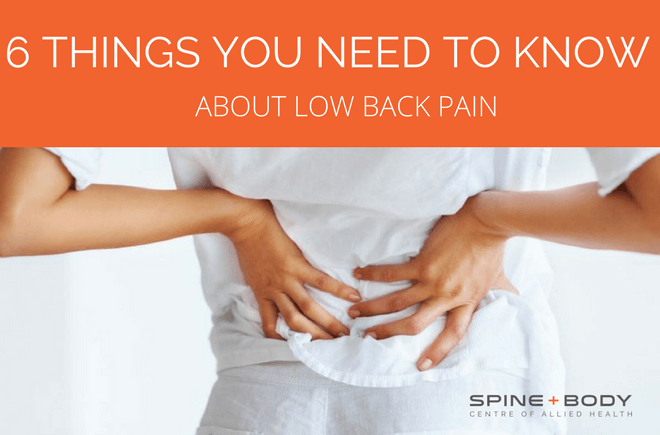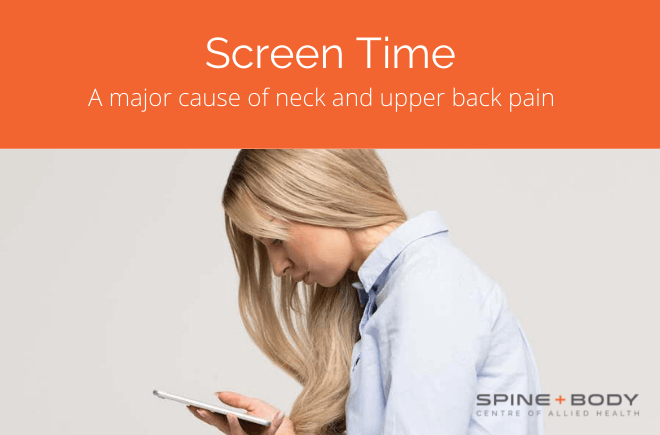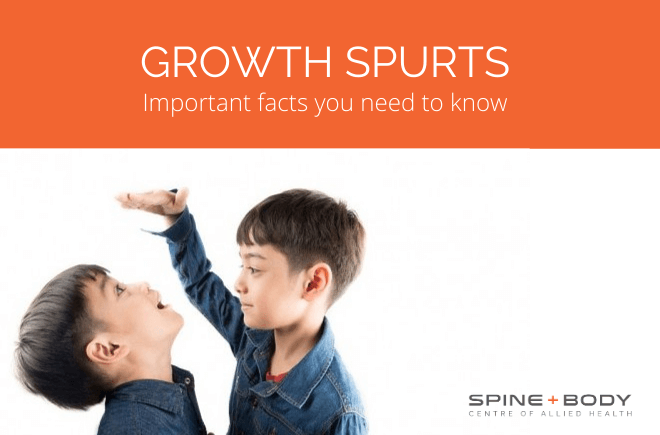6 things you need to know about lower back pain

By Peter Georgilopoulos, APA Sports Physiotherapist, Spine and Body Gold Coast.
80% of us will encounter acute low back pain at least once in our lives. It is important to manage acute low back pain correctly from the outset to avoid lengthy and recurrent episodes. Here are 6 things that can assist you in formulating a management plan.
1 The word “acute” means “of recent onset”. It does not imply a degree of severity. Severity is usually described as “mild”, “moderate”, or “severe”. Pain that has endured for longer than three months is described as “chronic”.
2 Sudden or “acute” low back pain is generally the result of structural failure of a disc or an overloading of arthritic or degenerative joints.
Disc related (discogenic) pain usually occurs when the spine is bent forward and rotated at the same time. Frequently this is the result of lifting a load in this position but may also occur whilst stretching forward to put on shoes, sweep a floor or pick up a child.
Joint pain (facetogenic pain) is often the result of excessive load bearing of degenerative joints. This can occur after running, jumping, lifting weights or simply walking around a shopping centre whilst carrying bags for several hours.
3 Disc related pain and facet joint pain may both result in low back pain but are in fact quite different in the way they present and how they should be managed.
4 Disc pain:
*often caused by a specific action such as bending forward, lifting or jarring such as occurs when stepping into a pot hole.
*is predominantly one sided.
*pain may radiate into either buttock, posterior thigh and/or calf and foot. This occurs when the damaged (bulging) disc places pressure (encroaches) on a nerve root. Each nerve root supplies a different set of muscles and skin, so we can accurately diagnose which nerve root is involved by charting where the pain radiates.
Pressure on a nerve root can also result in diminished sensation. This is described as “anaesthesia” (numbness), “paraesthesia” (pins and needles) or causalgia (a burning sensation).
CAUTION: in some (rare) cases of acute disc pain, pressure may encroach upon the spinal cord itself which can result in difficulty passing water (micturition). This is an emergency situation and must be managed in an Accident & Emergency Department of a hospital.
Acute disc pain may result in a characteristic “pelvic shunt” posture where the pelvis shifts to one side, predictably to the symptomatic side. This occurs unconsciously as the patient cannot align the pelvis and trunk as to do so places greater pressure on the affected nerve root.
Typically “disc” pain causes pain when bending forward and is relieved by arching backwards.
5 Facetogenic or joint pain is generally characterised by gradual onset of symptoms as compared to disc pain in which there is a very definite “pop”, “snap” or “tear”.
Joint pain may emerge over several hours and is generally the result of excessive loading or prolonged posture (standing or sitting for a long time).
Unlike disc pain which is generally one sided, facet joint pain is more diffuse and often encompasses the entire lower back which may include the buttock regions.
Unlike disc pain, facet joint pain is often relieved by bending forward or supported sitting and aggravated by aching back.
6 How to manage acute low back pain:
*Determine whether your back pain is disc or joint related as each needs to be managed entirely differently.
Essentially, if your pain occurred by bending forward and is aggravated by bending forward it’s most likely disc in origin. This is especially true if pain radiates down one leg or if your pelvis has shifted to one side.
For disc pain:
*avoid bending forward or sitting on low seats.
*if the pelvis is shifted to either side, stand with the opposite shoulder against a wall and GENTLY try to coax the pelvis back into alignment.
*if there is leg pain, lie on your back with knees bent and feet on the floor and rotate knees AWAY from the painful side.
*when possible try to turn over onto the abdomen and gently arch backwards onto your elbows. If this is too difficult, simply lie on your tummy or place a pillow under your chest. Hold for a few minutes until pain and spasm settles. You can repeat this in standing by placing your hands on your hips and arching backwards.
You may wish to take analgesics (pain killers) to alleviate pain but it is best to avoid anti-inflammatories as the inflammatory process is vital in creating sufficient scar tissue to repair the damaged disc wall.
For joint pain, avoid prolonged standing or arching back. Sit in a supported position and take an over the counter anti-inflammatory if you are medically able to do so (not advised if you are pregnant, have G.I bleeding, are prone to asthma or have a cardiac or vascular condition).
Finally, make an appointment to see an experienced manual therapist. Early manual therapy intervention will immediately ease your pain and enable you to “move well”.



